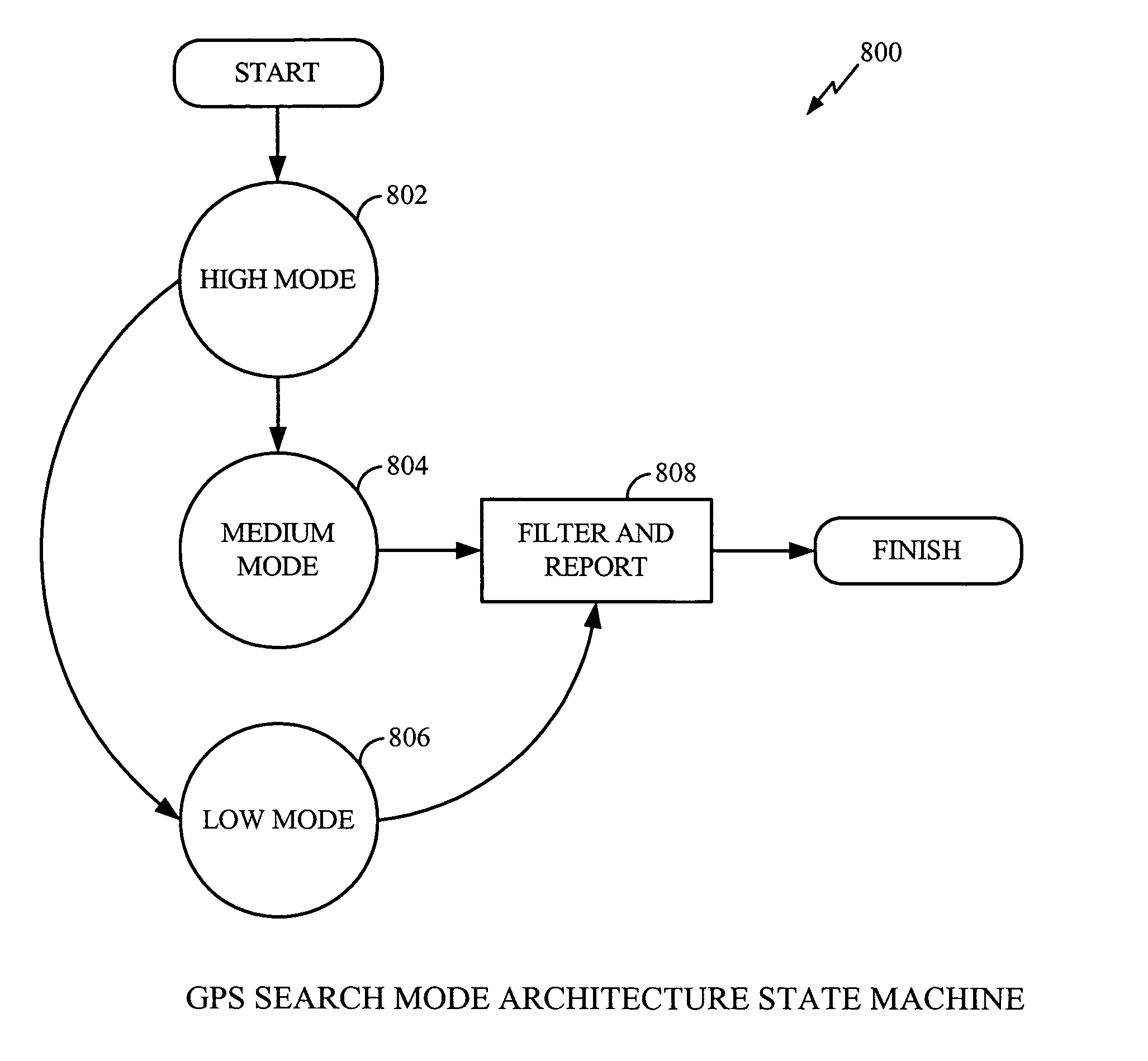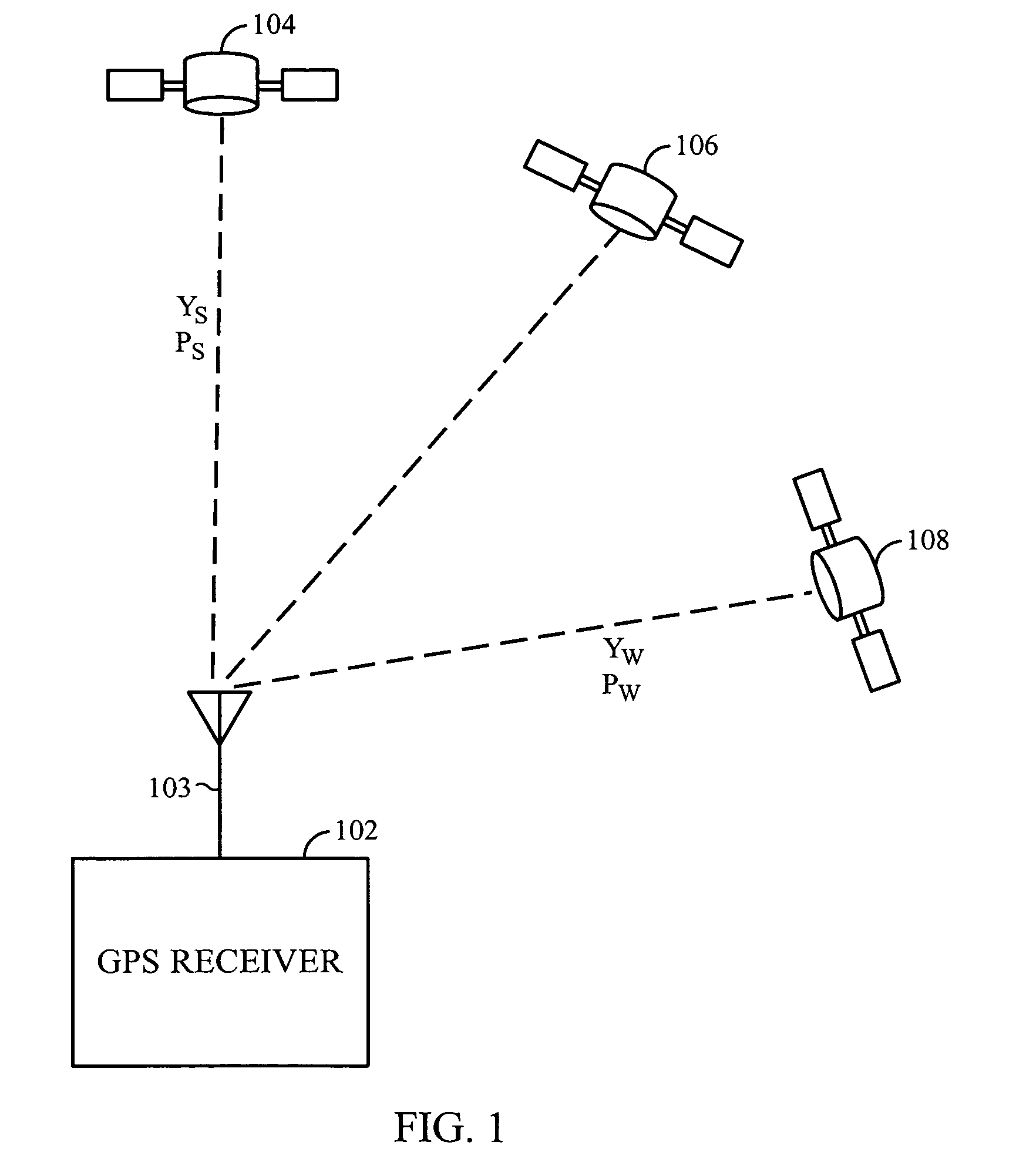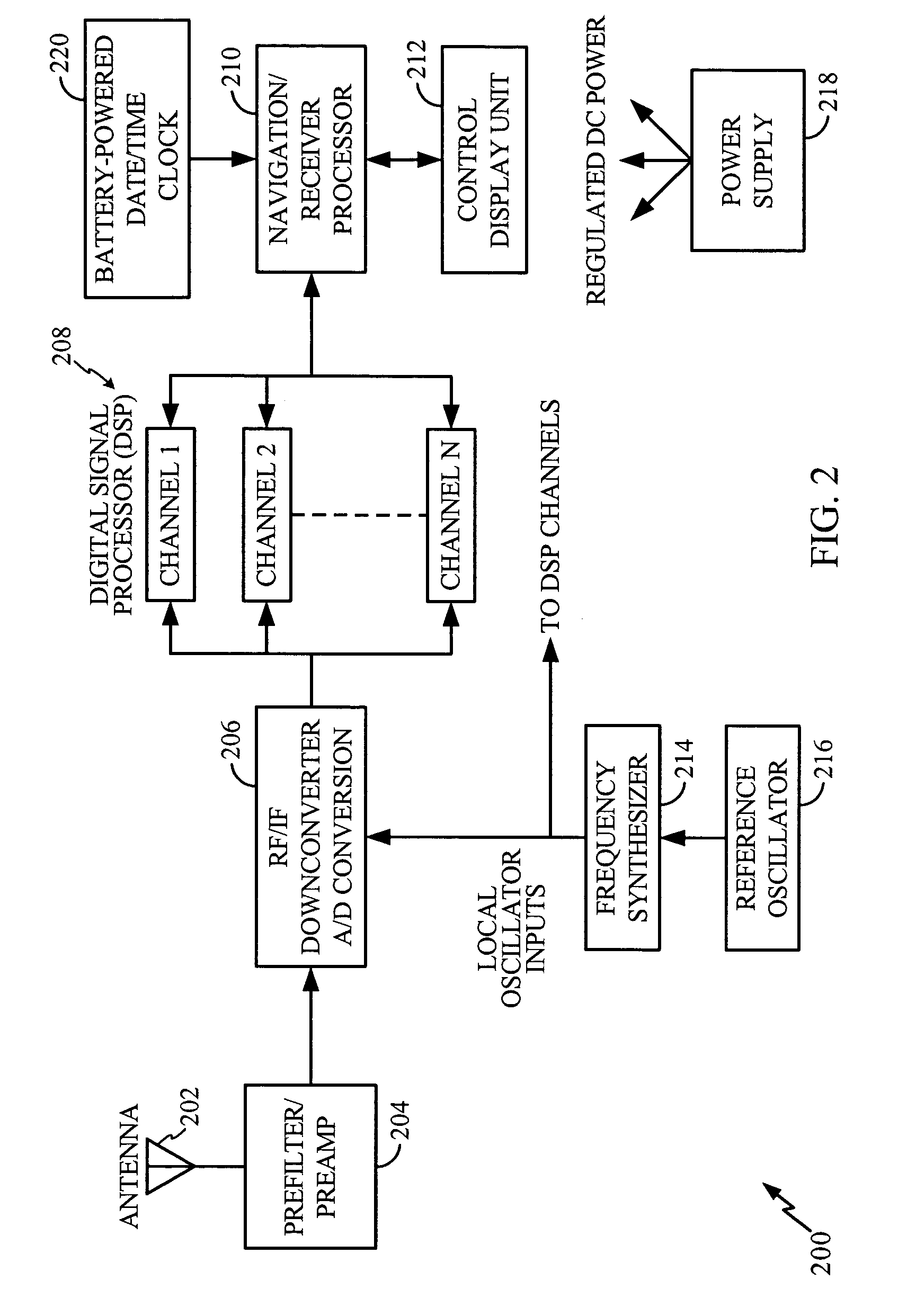Cross-correlation mitigation method and apparatus for use in a global positioning system receiver
a global positioning system and receiver technology, applied in the field of global positioning system receivers, can solve the problems of receiver never acquiring the sv, severe attenuation of the signal correlation process in the code-phase dimension by the resulting frequency response roll-off characteristics, and loss of the carrier frequency of the sv
- Summary
- Abstract
- Description
- Claims
- Application Information
AI Technical Summary
Benefits of technology
Problems solved by technology
Method used
Image
Examples
first embodiment
[0093]In one embodiment, GPS satellite signals are searched in accordance with a GPS Search Mode Architecture. The GPS search mode architecture is implemented in software and is resident in an integrated circuit (IC) within the GPS receiver. However, those skilled in the GPS communications and software design arts shall recognize that other embodiments of the GPS search mode architecture are possible and that the described embodiments should not be interpreted as limiting the scope or spirit of the present invention. In one embodiment, the GPS Search Mode Architecture includes different levels of search modes, each having different coherent integration lengths and varying degrees of sensitivity. For example, FIG. 8a is a simplified high level state machine 800 of the GPS search mode architecture adapted for use with the present invention. FIG. 8a shows the high level state machine of the search procedures to be followed when searching for SV satellite signals.
[0094]In accordance wit...
second embodiment
[0105]In accordance with the GPS search mode architecture, in the Level 1 (or Mode 1) search (state 802 of FIGS. 8a, 8b), the Code Phase and Doppler windows for each SV are enlarged and segmented. The Mode 1 search segments are then processed. A “max peak” algorithm is then performed for each search result. In one embodiment, once all search segments have been processed, the measurements are segmented into three satellite signal categories: “Strong”, “Weak”, and “None”. For example, in one embodiment, if the normalized peak energy for a given SV exceeds a predefined Level 1 threshold, then the measurement is classified as “Strong”. Otherwise, the measurement is classified as “Weak” or “None” depending upon whether a detectable measurement is found.
[0106]As described above with reference to the state machines of FIGS. 8a and 8b, once all of the searches have been processed, a variety of cross-correlation tests may be performed on the detected satellite signals (for example, at the st...
PUM
 Login to View More
Login to View More Abstract
Description
Claims
Application Information
 Login to View More
Login to View More - R&D
- Intellectual Property
- Life Sciences
- Materials
- Tech Scout
- Unparalleled Data Quality
- Higher Quality Content
- 60% Fewer Hallucinations
Browse by: Latest US Patents, China's latest patents, Technical Efficacy Thesaurus, Application Domain, Technology Topic, Popular Technical Reports.
© 2025 PatSnap. All rights reserved.Legal|Privacy policy|Modern Slavery Act Transparency Statement|Sitemap|About US| Contact US: help@patsnap.com



